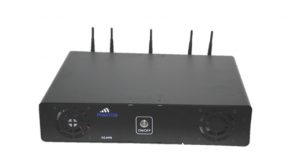There is a myriad of uses for jamming technology. The growing relevance of surveillance in various aspects of our lives is leading more and more people to believe that privacy is harder to maintain than before. As a result, some of these people advocate for the use of jammers or jamming technology.
The jamming market is diverse and covers a lot of ground, geographically speaking. It is also heavily impacted by geopolitical trends, movements, and relations between countries. For example, interest in jamming technologies has grown dramatically over the past few years in Japan, China, and North and South Korea. This growth can be attributed to territorial disputes in the region, as well as the unstable political regime in North Korea.
One of the largest and most diverse markets for jamming technology in general is the USA. The US Military has long been known for innovation and specialization, especially within the fields of surveillance and security. North American support of these technologies has allowed them to grow at an incredible rate. The type of innovation that the US Military supports has directly sponsored the development of smart and portable jammers in recent years, too.
The fact that jamming technology is often utilized in military applications means that quality and vendor control is highly relevant in the market overall. In many countries, jammers are subject to stringent regulations and quality control. Laws such as these directly impact which vendors can operate, as well as the extent to which such products can be sold.
Recent developments within smart jamming have involved the incorporation of smart jammers in wireless communication. More specifically, smart jammers can be used aggressively in the disruption of exchanges of information. This is becoming especially relevant as we rely more and more on such networks for communication in general.
New developments regarding smart jammers have involved adapting the frequency bands that smart jammers can operate on. Jamming nodes have become more sensitive, allowing them to respond more quickly to the information they receive. In addition, jamming nodes have been refined to the extent that they can be concealed in the time-frequency plane. These are the kinds of jammers that one typically refers to as a smart jammer.
The costs involved in manufacturing jammers are now less than ever before. Materials are also cheaper. As a result, smart jammers can be utilized to directly target transmission packets. This makes them an exciting potential solution for a number of intelligence applications. At present, the only way of defending against an attack from such jammers would be utilizing frequency hopping or game algorithms.
One manufacturer that is innovating jamming technology in the US commercial sector is Phantom Technologies. The company has a range of portable jammers and other kinds of smart jammers. These devices can be used for drone detection and countersurveillance, as well as being used within prisons. Some of the portable jammers produced by Phantom Technologies can be used for jamming cellphones, radios, IEDs, GPS, and wifi. Products like these make jamming technology truly accessible to everybody.







